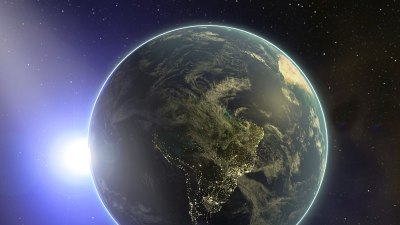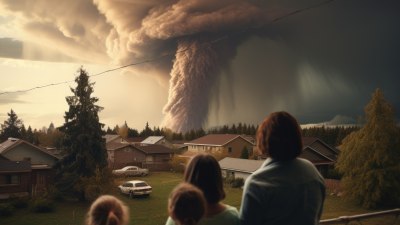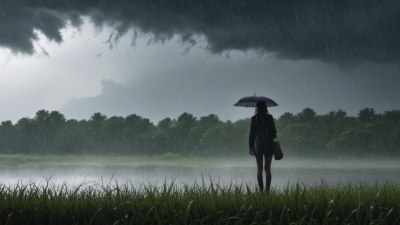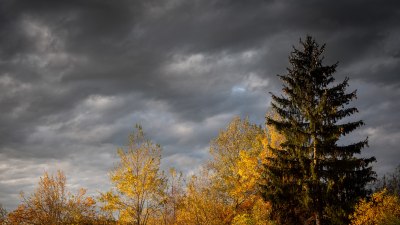How Melting Glaciers Are Changing Ocean Currents and Weather Worldwide
Explore the impact of melting glaciers on ocean currents and global weather patterns.
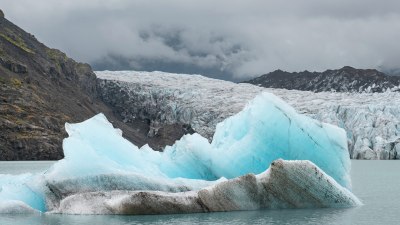
Climate change is one of the most pressing global challenges facing humanity, with melting glaciers emerging as a significant consequence. These vast bodies of ice, once enduring fixtures of our planet, are shrinking rapidly due to rising global temperatures. The repercussions of glacier melting extend far beyond the immediate loss of ice; they significantly alter ocean currents and, consequently, weather patterns worldwide. Understanding how these changes manifest and their implications is critical for predicting future climate scenarios.
The polar regions, primarily the Arctic and Antarctica, hold the majority of the world's glaciers. Traditionally, these glaciers have acted as enormous reflectors of sunlight while also maintaining the Earth's thermal balance. However, as temperatures rise, the rate of glacial melt accelerates, leading to a considerable influx of freshwater into the oceans. This influx disrupts the salinity levels and density gradients that are crucial for the regulation of ocean currents.
The Mechanism of Ocean Currents
Ocean currents are essentially large-scale water movements that traverse the globe, driven by factors such as wind, the Earth's rotation, and differences in temperature and salinity. These currents play a vital role in regulating climate by redistributing heat from equatorial regions towards the poles, thus influencing weather patterns and marine ecosystems.
One of the most critical systems affected by glacial melt is the Atlantic Meridional Overturning Circulation (AMOC). This current system helps to moderate temperatures in Western Europe and North America, undertaking a vital heat transportation role. When glaciers melt, large volumes of freshwater dilute the seawater, reducing its density and subsequently hindering the sinking of colder, saltier water. If this disruption continues, it could lead to a weakening or even a collapse of the AMOC, potentially resulting in severe climatic shifts.
Impacts of Disrupted Currents
Should the AMOC weaken significantly, the consequences would be profound. Countries in Western Europe could experience harsher winters, whereas regions like the eastern United States might see increased flooding due to rising sea levels and altered precipitation patterns. Additionally, the tropical regions would face shifts in storm behavior, potentially leading to more intense hurricanes and typhoons as ocean temperatures rise.
The displacement of traditional ocean current patterns could also alter marine ecosystems. Fisheries might experience changes in the distribution of various species, with some disappearing from their historical ranges and others invading new areas. This shift could endanger local economies reliant on fishing and create new challenges in managing marine resources.
Weather Patterns and Climate Extremes
As ocean currents modify, so too do weather patterns. The additional freshwater from melting glaciers affects atmospheric conditions. Changes in sea surface temperatures create feedback loops that intensify extreme weather phenomena. For instance, warmer ocean surfaces can lead to more extreme heatwaves, droughts, and storms.
In the Arctic, the reduction of ice cover is causing permafrost degradation, which releases methane—a potent greenhouse gas—into the atmosphere. This release further exacerbates global warming, creating a vicious cycle. The changing landscape also leads to alterations in indigenous weather patterns, impacting agriculture, water supply, and natural ecosystems.
Regional Variations
The effects of melting glaciers are not uniform; they vary drastically by region. In North America, the melting of glaciers in Alaska and the Pacific Northwest is leading to diminished snowpack, which historically provides crucial freshwater. The consequences will be felt in water supply for urban populations and irrigation for agriculture.
In South America, the Andean glaciers are receding swiftly, affecting the flow of rivers that supply water to millions. Similarly, in the Himalayas, glacial melt temporarily increases water availability for South Asian rivers but ultimately threatens long-term water security.
Global Implications
Globally, these shifts pose challenges not only to natural ecosystems but also to human systems. As countries grapple with the fallout from changing weather patterns, there will be increased migration from affected regions due to resource scarcity. Economic impacts will also become apparent, with agriculture, tourism, and fishing industries facing disruption. As such, the threat posed by melting glaciers extends beyond environmental concerns; it encompasses social, political, and economic dimensions.
To address these challenges, global cooperation becomes essential. Nations must collaborate to develop strategies to mitigate the effects of glacier melting and adapt to the changes. This includes investing in renewable energy, enhancing infrastructure to withstand extreme weather, and implementing policies to protect vulnerable ecosystems.
The Path Forward
The science surrounding glacier melt and its implications is continually evolving. It underscores the urgency of climate action and the need for both immediate and sustained efforts to curb emissions. Public awareness is also crucial; individuals and communities must understand their role in mitigating climate change.
Incorporating climate education in school curriculums can empower future generations to take action. By promoting sustainable practices and supporting policies aimed at reducing carbon footprints, societies can contribute to limiting global warming and its associated impacts, including the alarming rates of glacial melt.
In summary, melting glaciers are not merely a tale of disappearing ice; they are harbingers of widespread change in ocean currents and global weather patterns. The interconnections of these systems amplify the urgency of addressing climate change. Only through collective action and global cooperation can we hope to mitigate the consequences of these profound changes. As we gather more data and continue to understand the complexities of our climate system, it is imperative to remember that every action counts in preserving the delicate balance of our planet's ecosystems.

